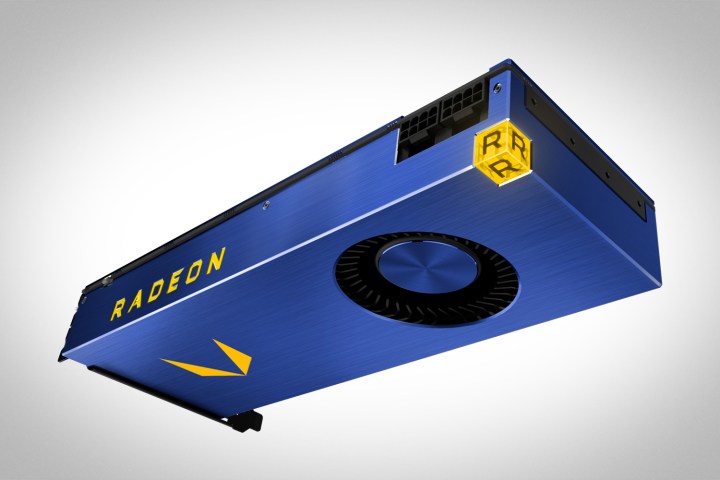
Much has been said of AMD’s Vega graphics card prior to its release. We have seen rumors of world-beating performance and more mid-tier offerings. We have heard concerns of power draw and suggestions of sky-high prices. Any questions we may have had though, can now begin to be answered, as AMD’s Vega Frontier Edition card is available.
This is a card that is not aimed at gamers though, even if it should function exceedingly well. Said to offer as much as 13.1 TFLOPS of single precision performance, this card is specced higher than even AMD’s own dual chip Radeon Pro Duo Polaris card. More importantly, though, that is more than Nvidia’s Titan Xp, which is a monster in its own right.
Final specifications give it a “typical clock speed” of 1,382MHz, boosting up to 1,600MHz when required. It has 16GB of second-generation high-bandwidth memory (HBM), with a bus width of 2,048-bit. That gives it a total memory bandwidth of 4,83GBps, which is curiously less than the Fury X, despite having four times the overall memory and using second-generation HBM.
Typical power draw is said to be under 300w, though that would suggest that it goes higher than that at times. That means this is a pretty power-hungry card, though not necessarily something that will require its own power supply unit or a major upgrade for the enterprises that will make use of such a card. What that means for the air cooler design that this card ships with, remains to be seen.
That air cooler will come as standard, with a price tag of $1,000, according to Anandtech). The promised liquid-cooled version will ship a little later this year, with a much higher price of $1,500.
Even though such price tags would put such a card out of reach of most gamers — even those used to the currently inflated graphics card prices — AMD is keen to position the Vega Frontier Edition as a professional card, not one for gamers. The company is also urging them to wait for the RX release, which it claims will be faster than this version anyhow, it has made this card compatible with its pro drivers.
Its slides claim the card would be perfect for virtual reality game development, with whatever engine is being used.
As it stands, Newegg and SabrePC are listing the card at its MSRP, though Newegg will not begin shipping until July 1.
Editors' Recommendations
- Intel Battlemage graphics cards: release date speculation, price, specs, and more
- AMD’s gaming revenue is down by 48%, and it won’t get better
- AMD’s canceled GPU could have crushed Nvidia
- The sad reality of AMD’s next-gen GPUs comes into view
- AMD needs to fix this one problem with its next-gen GPUs




